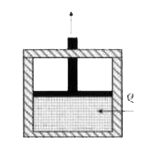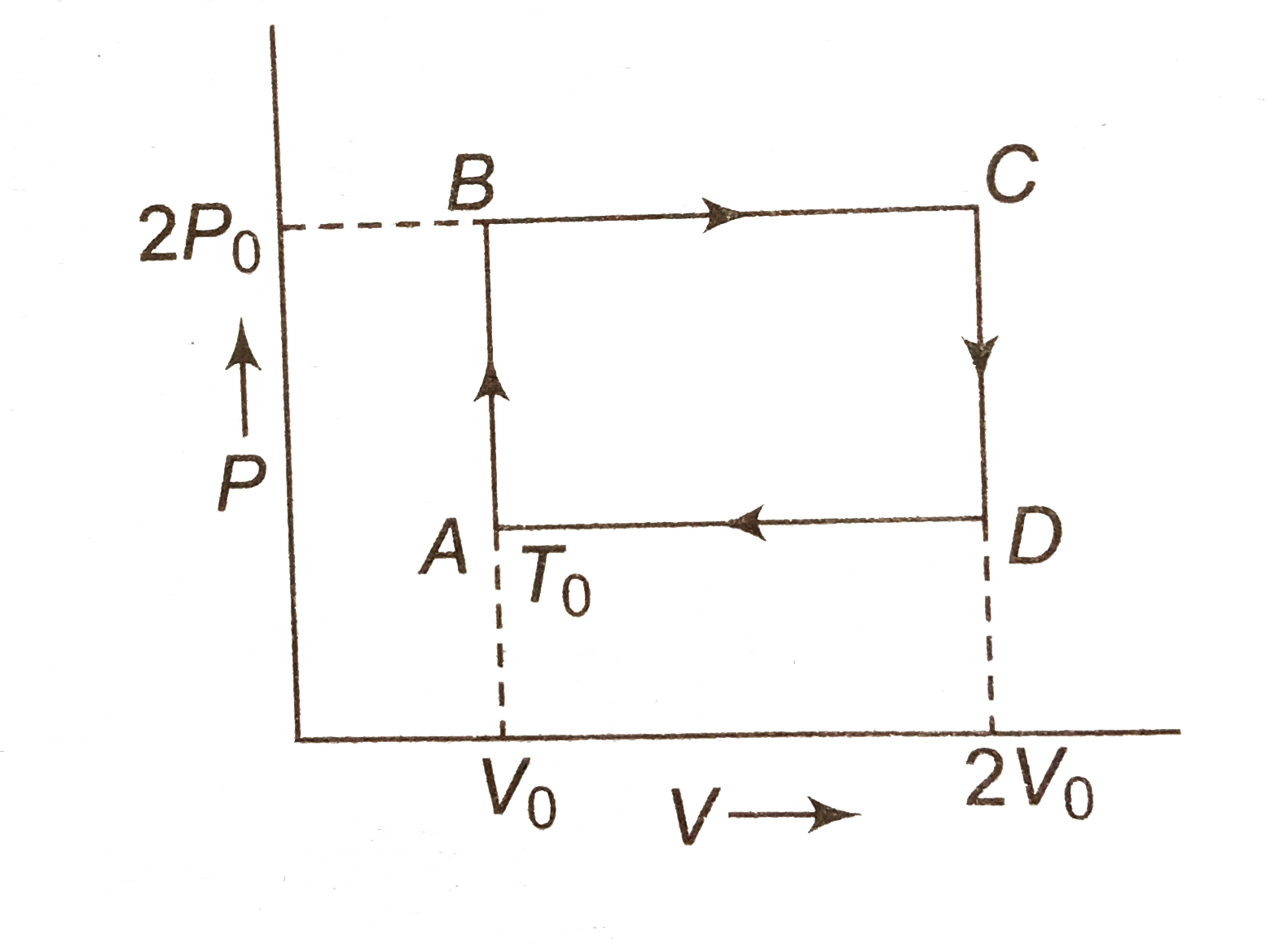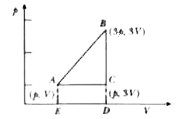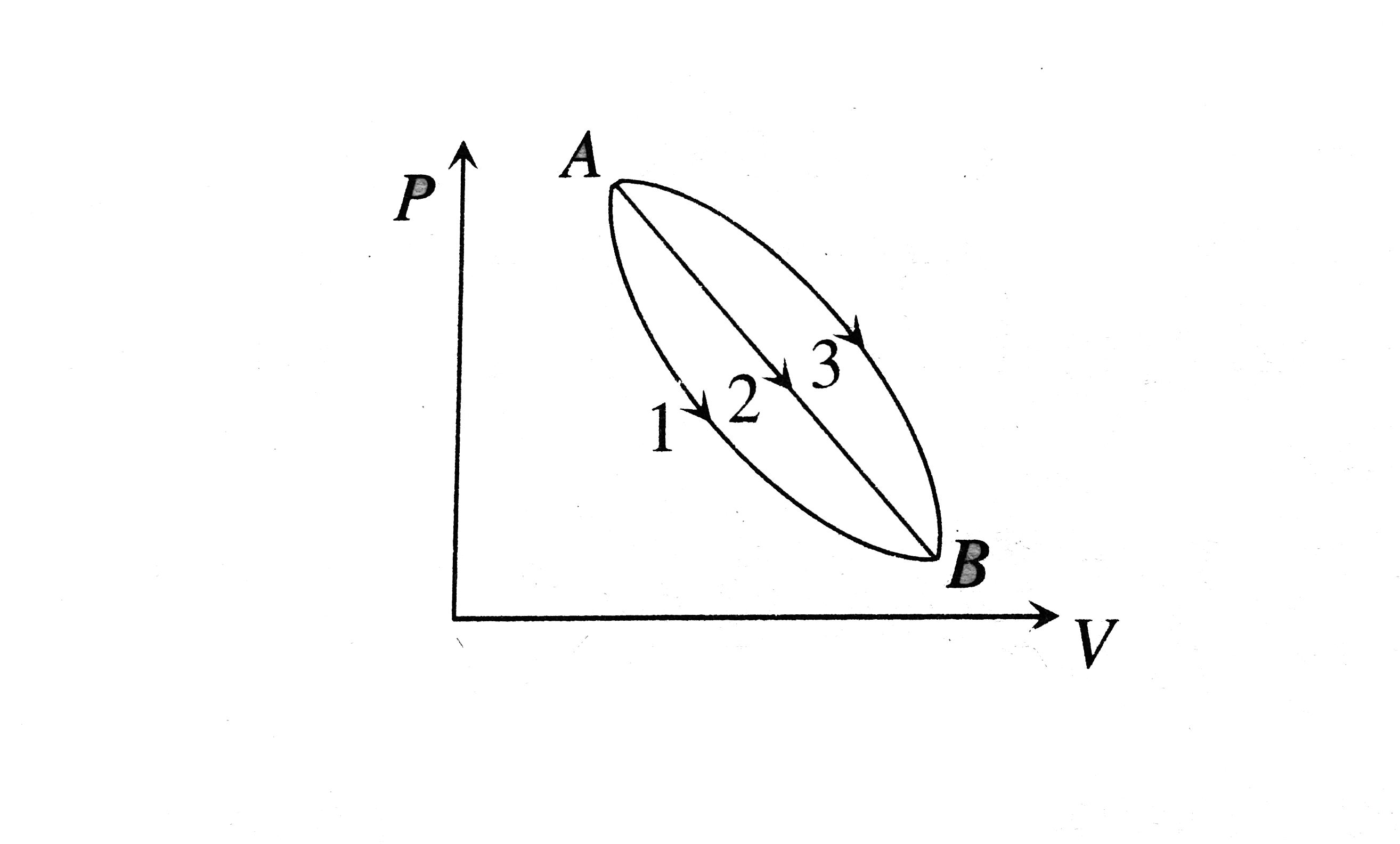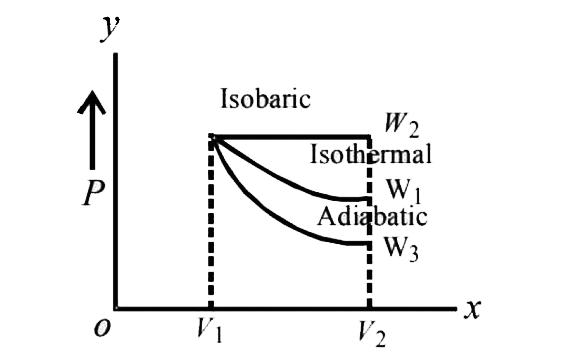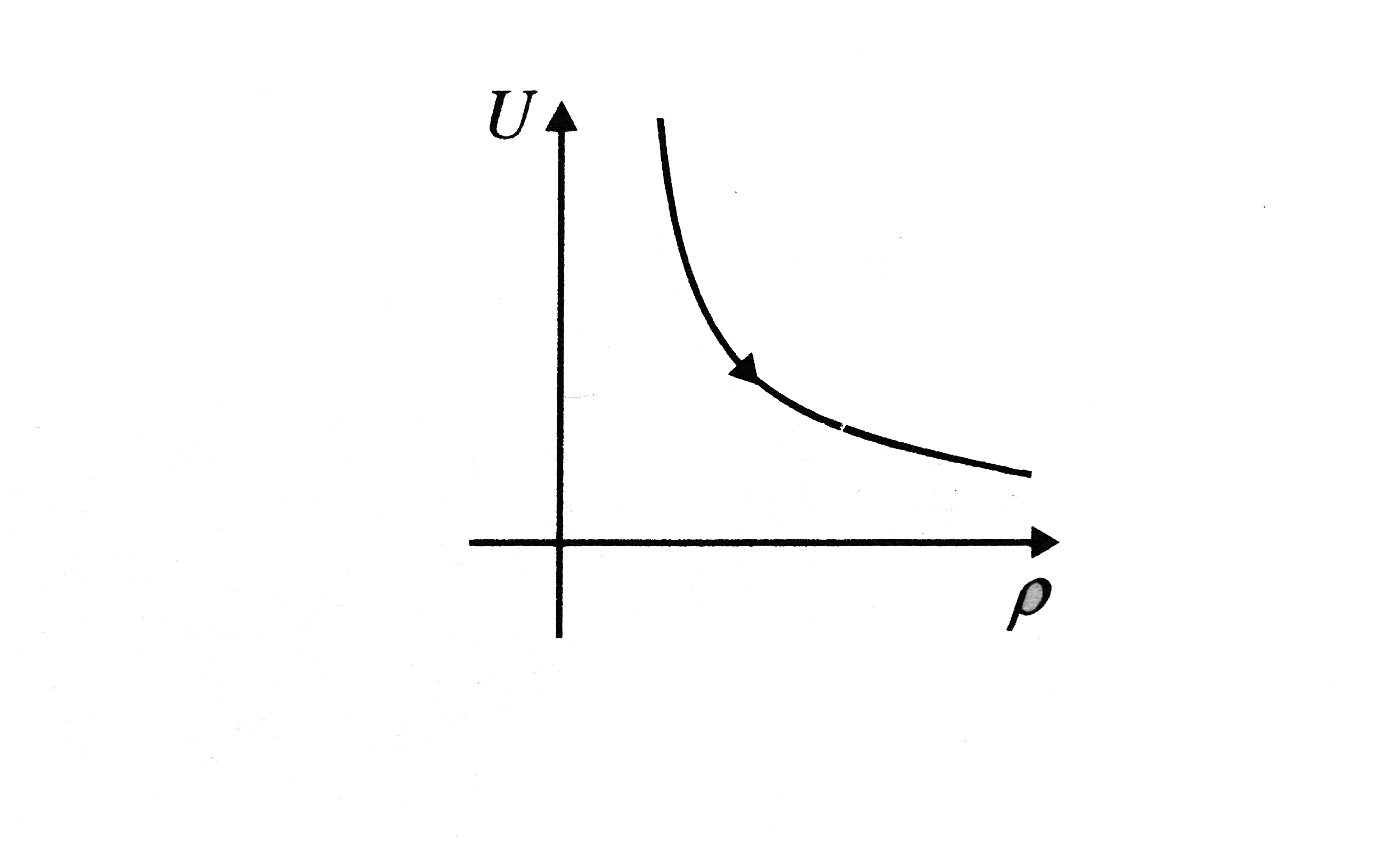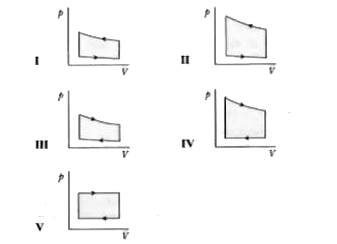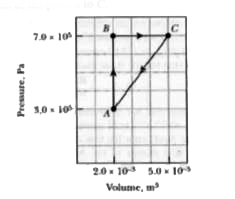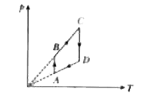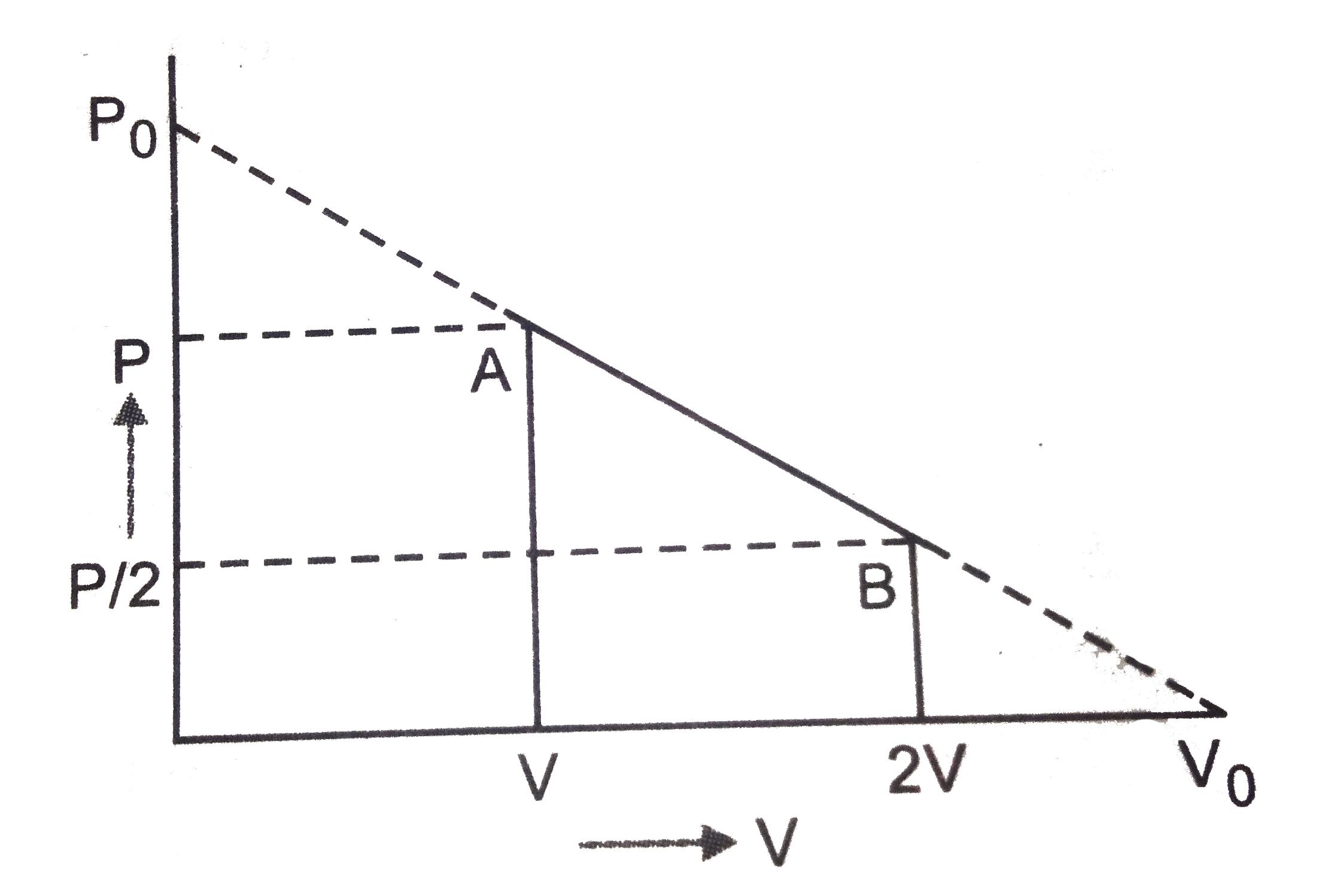PRACTICE QUESTIONS ( SINGLE CORRECT CHOICE TYPE ) from RESNICK AND HALLIDAY PHYSICS (HINGLISH) THE FIRST LAW OF THERMODYNAMICS for Class 12
| Class 12 | PHYSICS |
| Chapter | THE FIRST LAW OF THERMODYNAMICS |
| RESNICK AND HALLIDAY PHYSICS (HINGLISH) | PRACTICE QUESTIONS ( SINGLE CORRECT CHOICE TYPE ) |
| Medium | English |
| Academic Year | 2023-2024 |
Question 19
A thermally isolated sample of an ideal gas at a fixed temperature is confined to one half of a container by an impermeable membrane. The other half of the container is evacuated. The membrane is then pierced and the gas is allowed to expand freely and to double its volume as shown. Which one of the following statements is true concerning this situation? View SolutionQuestion 27
A cylindrical chamber A of uniform cross section is divided into two parts X and Y by a movalbe piston P which can slide without friction inside the chamber. Initially part X contains 1mol of a monochromatic gas and Y contains 2mol of a diatomic gas, and the volumes of X and Y are in the ratio 1:2 with both parts X and Y being at the same temperature T. Assuming the gases to be ideal, the work W that will be done in moving the piston slowly to the position where the ratio of the volumes of X and Y is 2:1 will be
 View Solution
View SolutionQuestion 32
Two cylinders A and B fitted with pistons contain equal amounts of an ideal diatomic gas at 300K. The piston of A is free to move, while that B is held fixed. The same amount of heat is given to the gas in each cylinder. If the rise in temperature of the gas in A is 30K, then the rise in temperature of the gas in B is View SolutionQuestion 43
One mole of a monatomic ideal gas has an initial pressure, volume, and temperature of P0,V0, and 438 K, respectively. It undergoes an isothermal expansion that triples the volume of the gas. Then, the gas undergoes an isobaric compression back to its original volume. Finally, the gas undergoes an isochoric increase in pressure, so that the final pressure, volume, and temperature are p0V0 and 438 K, respectively. Find the total heat for this three-step process, and state whether it is absorbed by or given off by the gas.View SolutionQuestion 44
Suppose a monatomic ideal gas is contained within a vertical cylinder that is fitted with a movable piston. The piston is frictionless and has a negligible mass. The area of the piston is3.14×10−2m2, and the pressure outside the cylinder is 1.01×105 Pa. Heat (2093 J) is removed from the gas. Through what distance does the piston drop?View SolutionQuestion 48
The hot reservoir for a Carnot engine has a temperature of 890 K, while the cold reservoir has a temperature of 670 K. The heat input for this engine is 4800 J. The 670 K reservoir also serves as the hot reservoir for a second Carnot engine. This second engine uses the rejected heat of the first engine as input and extracts additional work from it. The rejected heat from the second engine goes into a reservoir that has a temperature of 420 K. Find the total work delivered by the two engines.View SolutionQuestion 50
A gas may expand either adiabatically or isothermally. A number of p−V curves are drawn for the two processes over different ranges of pressure and volume, it will be found that
(i) Two adiabatic curves do not intersect
(ii) two isothermal curves do not intersect
(iii) an adiabatic curve and an isothermal curve may intersect.
(iv) the magnitude of the slope of an adiabatic curve is greater than the magnitude of the slope of an isothermal curveView SolutionQuestion 54
A steel drill making 180 rpm is used to drill a hole in a block of steel. The mass of the steel block and the drill is 180 gm. If the entire mechanical work is used up in producing heat and the rate of raise in temperature of the block and the drill is 0.5 °C/s. Find
(a) the rate of working of the drill in watts, and
(b) the torque required to drive the drill. Specific heat of steel =0.1andJ=4.2J/cal. Use : P=τωView SolutionQuestion 58
5.00 kg of liquid water is heated to 100.0∘C in a closed system At this temperature , the density of liquid water is 958 kg/m3 . The pressure is maintained at atmospheric pressure of 1.01×105 Pa. A moveable piston of negligible weight rests on the surface of the water. The water is then converted to steam by adding an additional amount of heat to the system. When all of the water is converted, the final volume of the steam is 8.50m3. The latent heat of vaporization of water is 2.26×106 J/kg.

How much work is done by this closed system during this isothermal process?View SolutionQuestion 59
5.00 kg of liquid water is heated to 100.0∘C in a closed system At this temperature , the density of liquid water is 958 kg/m3 . The pressure is maintained at atmospheric pressure of 1.01×105 Pa. A moveable piston of negligible weight rests on the surface of the water. The water is then converted to steam by adding an additional amount of heat to the system. When all of the water is converted, the final volume of the steam is 8.50m3. The latent heat of vaporization of water is 2.26×106 J/kg.
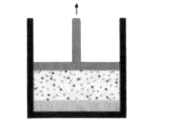
How much heat is added to the system in the isothermal process of converting all of the water into steam? View SolutionQuestion 60
5.00 kg of liquid water is heated to 100.0∘C in a closed system At this temperature , the density of liquid water is 958 kg/m3 . The pressure is maintained at atmospheric pressure of 1.01×105 Pa. A moveable piston of negligible weight rests on the surface of the water. The water is then converted to steam by adding an additional amount of heat to the system. When all of the water is converted, the final volume of the steam is 8.50m3. The latent heat of vaporization of water is 2.26×106 J/kg.
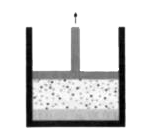
What is the change in the internal energy during this isothermal process?View SolutionQuestion 62
An ideal monatomic gas expands isobarically from state A to state B. It is then compressed isothermally from state B to state C and finally cooled at constant volume until it returns to its initial state A.

How much work is done by the gas in expanding isobarically from A to B? View SolutionQuestion 65
Two moles of an ideal gas have an initial kelvin temperature Ti and absolute pressure Pi the gas undergoes a reversible isothermal compression from an initial volume Vi to a final volume 0.5 Vi
How much heat is exchanged with the environment? If heat is exchanged, is it absorbed or released?View SolutionQuestion 66
Two moles of an ideal gas have an initial kelvin temperature Ti and absolute pressure Pi the gas undergoes a reversible isothermal compression from an initial volume Vi to a final volume 0.5 Vi
The ratio of the molar specific heat capacity at constant pressure to that at constant volume, γ,for diatomic hydrogen gas is 7/5. In an adiabatic compression, the gas, originally at atmospheric pressure, is compressed from an original volume of 0.30m3 to 0.15m3 What is the final pressure of the gas? View SolutionQuestion 67
Carnot engine is an ideal heat engine, which converts heat energy into mechanical energy. Efficiency of Carnot engine is given by η=1−(T2/T1), where T1 is temperature of source and T1, is temperature of sink. If Q1 is the amount of heat absorbed/cycle from the source, Q2 is the amount of heat rejected/cycle to the sink and W is the amount of useful work done/cycle, then
W=Q1−Q2andQ2Q1=T2T1
A Carnot engine absorbs 6×105 cal. at 227∘C. Heat rejected to the sink at 127∘C is View SolutionQuestion 68
Carnot engine is an ideal heat engine, which converts heat energy into mechanical energy. Efficiency of Carnot engine is given by η=1−(T2/T1), where T1 is temperature of source and T1, is temperature of sink. If Q1 is the amount of heat absorbed/cycle from the source, Q2 is the amount of heat rejected/cycle to the sink and W is the amount of useful work done/cycle, then
W=Q1−Q2andQ2Q1=T2T1
Work done/cycle by the engine in the above question is. if source and sink temperature respectively 227 and 127 . heat absorbed by engine is given 6 .View SolutionQuestion 69
Carnot engine is an ideal heat engine, which converts heat energy into mechanical energy. Efficiency of Carnot engine is given by η=1−(T2/T1), where T1 is temperature of source and T1, is temperature of sink. If Q1 is the amount of heat absorbed/cycle from the source, Q2 is the amount of heat rejected/cycle to the sink and W is the amount of useful work done/cycle, then
W=Q1−Q2andQ2Q1=T2T1
Efficiency of the engine in the above question is .if source and sink temperature respectively 227 and 127 .View SolutionQuestion 70
Carnot engine is an ideal heat engine, which converts heat energy into mechanical energy. Efficiency of Carnot engine is given by η=1−(T2/T1), where T1 is temperature of source and T1, is temperature of sink. If Q1 is the amount of heat absorbed/cycle from the source, Q2 is the amount of heat rejected/cycle to the sink and W is the amount of useful work done/cycle, then
W=Q1−Q2andQ2Q1=T2T1
At what temperature should the sink be maintained to increase the efficiency by 10%? if source and sink temperature respectively 227 and 127 View Solution




